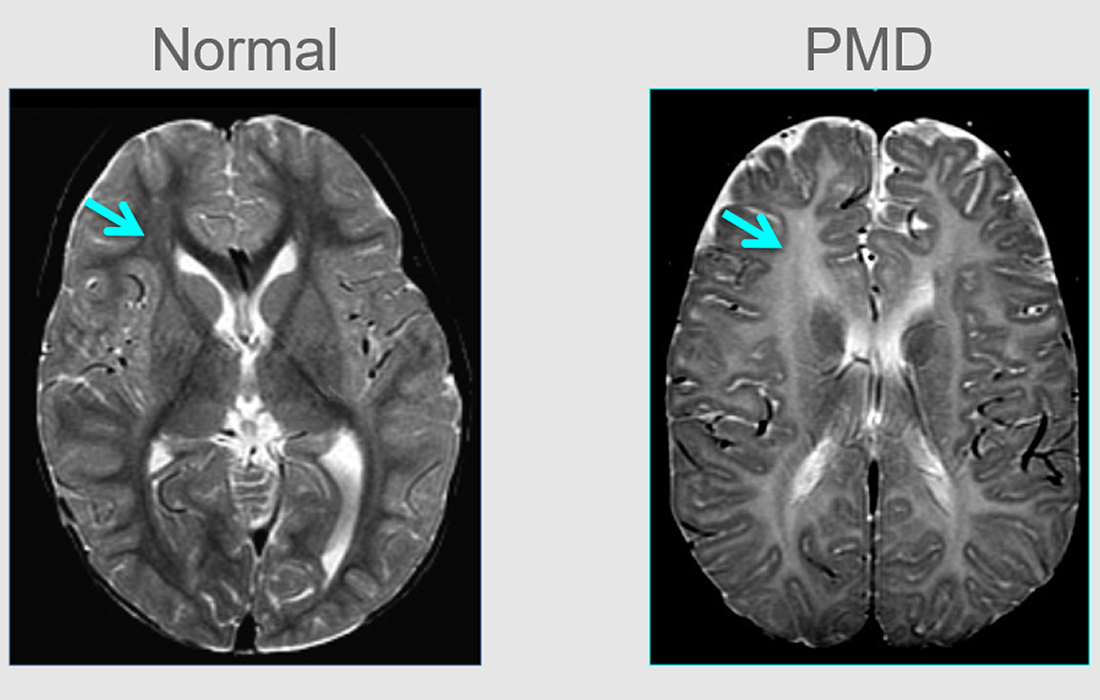Stem Cell Therapy for Specific Conditions
Stem cell therapy offers hope for rare neurological condition
Pelizaeus-Merzbacher disease (PMD) is a rare, congenital X-linked recessive leukodystrophy caused by a mutation of the proteolipid protein 1 (PLP1) gene (Gencic et al., 1989), resulting in reduced levels of myelination without an inflammatory component or substantial volume loss of brain tissue.
PMD is one of a group of hypomyelinating disorders (Helman et al., 2015), with an incidence of 1:200,000–500,000. The severity of the disease is variable, but a subset of patients is affected by an early-onset severe form of PMD (also referred to as the connatal form) characterized by early nystagmus and profound neurodevelopmental deficits.
The primary problem is the failure of oligodendrocytes to properly myelinate axons, resulting in axonal degeneration and neurological dysfunction. The genetic changes include gene duplications and point mutations of PLP1, resulting in abnormal myelin production or abnormal trafficking in the endoplasmic reticulum of oligodendrocytes.
Two studies report progress in using stem cells to develop new therapies for this condition that can be fatal before 10 years of age. The patients are often diagnosed at birth with symptoms of weakness and breathing difficulties, the progressive neurological problems in PMD are caused by disruptions in the formation of myelin, a fatty layer of insulation covering nerve fibers that enables rapid, long-distance communication and makes up the brain’s white matter. Therapies to help restore this vital substance in the brain have so far remained out of reach.
The studies advance in the field of stem cell medicine by showing how a drug therapy could benefit myelination and also that neural stem cell transplantation directly into the brains of boys with PMD is safe.
Hiroko Nobuta et al, collected skin cells from boys with PMD, several of whom also participated in the transplantation trial reported in Stem Cell Reports (the other study) and used induced pluripotent stem cell (iPSC) technology to turn these skin cells into brain cells that could be studied in laboratory dishes.
They discovered that myelin-producing cells called oligodendrocytes derived from PMD patients iPSC die as a result of iron toxicity, pointing to a potential explanation for the failure of myelination during brain development in children with PMD. They also showed that these PMD oligodendrocytes can be protected by removing the excess iron using an FDA-approved iron chelating agent called deferiprone, which boosted myelin formation both in cells grown in the laboratory, as well as in a mouse model of PMD.
“This study demonstrates the value of stem cell technology to allow us to elucidate the mechanisms of disease and potential therapies in the lab”, said Werning, the co-corresponding author on the study.
Nalin Gupta, et al launched a first in human effort to test whether surgically implanting neural stem cells produced by Stem cells Inc., into the white matter of PMD patients brains could help restore their missing myelin.
This was a Phase 1 trial to test long-term safety of the procedure. The researchers reported no adverse effects on detailed MRI brain scans suggesting that myelination had occured in the areas of transplantation.
The studies demonstrated that cell transplantation can be performed safely in PMD patients and the promising results lead to the investigators plan to continue doing more research and doing more trials.
These studies also show that these new cellular therapies are a viable option with promising results, that may be able to treat other common neurodegenerative conditions that currently have poor treatment response, like Alzheimer’s and Parkinson’s disease.
Source:
- University of California – San Francisco. “Stem cell studies offer hope for childhood neurological condition: As both therapy and tool for drug discovery, stem cells present parallel opportunities for treatment.” ScienceDaily. ScienceDaily, 3 October 2019. www.sciencedaily.com/releases/2019/10/191003141555.htm
- Hiroko Nobuta, et al. Oligodendrocyte Death in Pelizaeus-Merzbacher Disease Is Rescued by Iron Chelation. Cell Stem Cell, 2019; 25 (4): 531 DOI: 10.1016/j.stem.2019.09.003
- Nalin Gupta, et al. Long-Term Safety, Immunologic Response, and Imaging Outcomes following Neural Stem Cell Transplantation for Pelizaeus-Merzbacher Disease. Stem Cell Reports, 2019; 13 (2): 254 DOI: 10.1016/j.stemcr.2019.07.002

